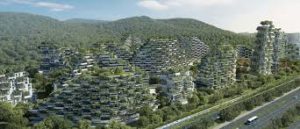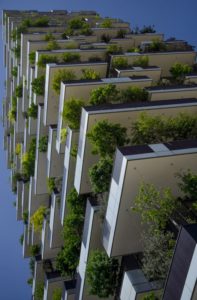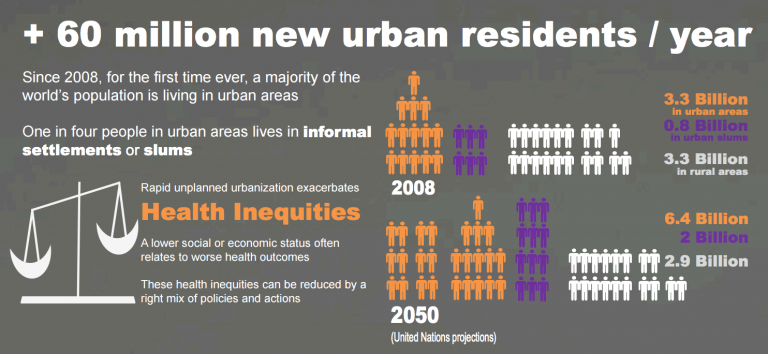
Italian architect Stefan Boeri designed the Vertical forest Mountain Hotel to clean the air in Guizhou, China.
“Is future urbanization going to be a good thing or a bad thing?” asks filmmaker Oscar Boyson. “If you care about people,” he adds, “this is going to be the defining question of our time.”
Already, more than half of the global population resides in cities. Notwithstanding current shortcomings such as over-crowding, economic and social injustice, and heat island landscapes, a prosperous urban world is a viable potential. A huge part of this depends upon the greening of urban environments.
A report from the UN hosted Habitat III last year, outlined the importance of green spaces for both physical and mental health and for building thriving communities, while tackling major ecological issues. Their findings concluded that people living within 1km of forests on the outskirts of a city are less stressed and anxious.
[title type=”h4″]The Magic of Trees[/title]
Trees store, sequester, and utilize CO2 during photosynthesis. Including them as an integral component in sustainable urban design significantly lowers a city’s carbon footprint:

By 2020 each tree in China’s Liuzhou Forest City will absorb 10,000 tons of CO2 and 57 tons of pollutants. They should produce about 900 tons of oxygen a year, too. https://www.weforum.org/agenda/2017/07/welcome-to-china-s-urban-forest/
- When planted near buildings, trees can cut air conditioning use by 30% and reduce heating energy use by a further 20-50%
- Population density means per capita GHG emissions are traditionally lower in urban areas than in the countries in which they are located.
- One large tree can absorb 150kg of carbon dioxide a year, as well as filter some of the airborne pollutants, including fine particulates.
- Cities are better equipped with emergency response capabilities than rural areas, making urban landscapes better prepared to respond to climate-related stressors such as floods, extreme weather events and heat waves.
- Trees can cool cities by between 2C and 8C.

… a pair of skyscrapers by Milan office Boeri Studio are nearing completion in the Italian city, featuring as many trees as could be planted in a hectare of forest.
[/list]
[title type=”h4″]
Meet Italian architect and urban planner Stefano Boeri[/title]
Working from his studio in Milan, Stefano Boeri’s firm specializes in applying green and ‘living’ adaptations in both buildings and open spaces, specifically in areas undergoing reconstruction or regeneration. (Milan is growing trees on skyscrapers)
Additionally, Boeri is Director of a post-doctoral research program at Shanghai’s Tongji University, where he works with the Italian Politecnico di Milano and TU Braunschweig in Germany on a platform called. Future City Lab (FCL). The interdisciplinary lab is focused on biodiversity and urban forestation as a means to address global climate change.

Boeri now has even bolder plans for China: to create entire “forest cities” in a country that has become synonymous with environmental degradation and smog. “We have been asked to design an entire city where you don’t only have one tall building but you have 100 or 200 buildings of different sizes, all with trees and plants on the facades,” he says. from China Explores Building Massive Vertical Forests to Retore Their Air Quality

